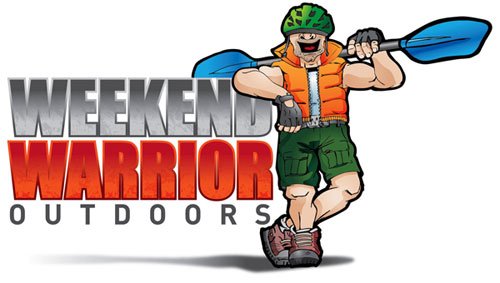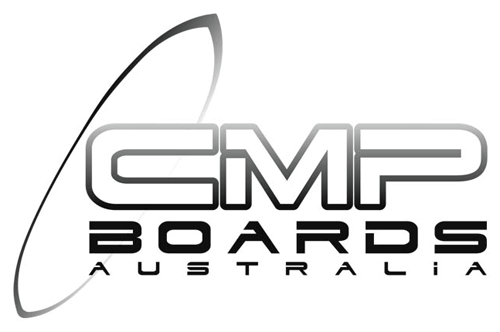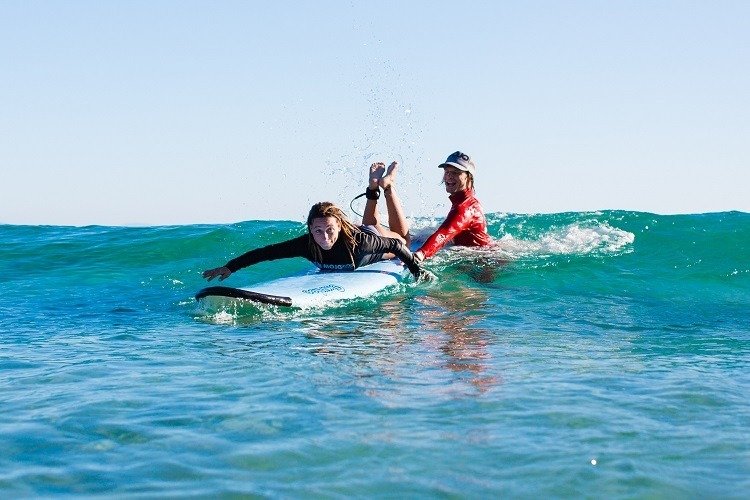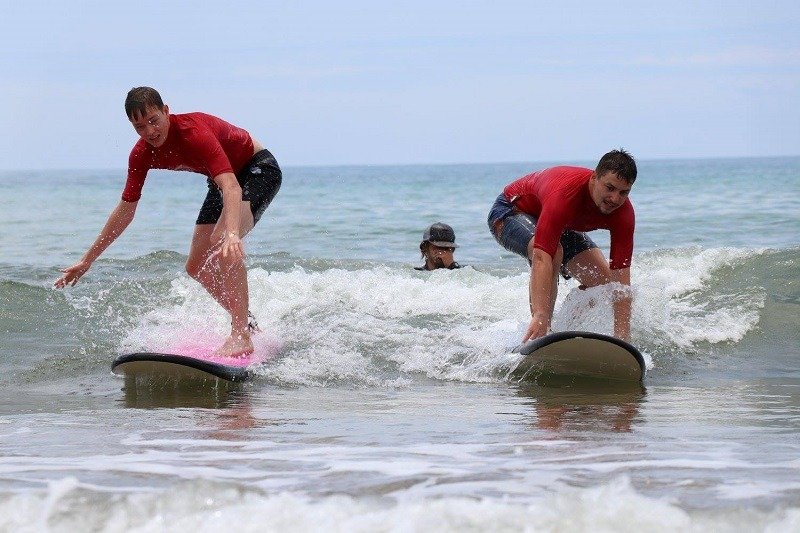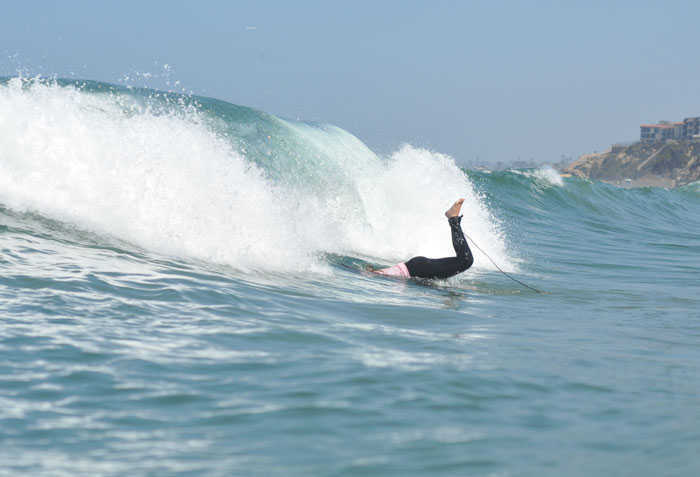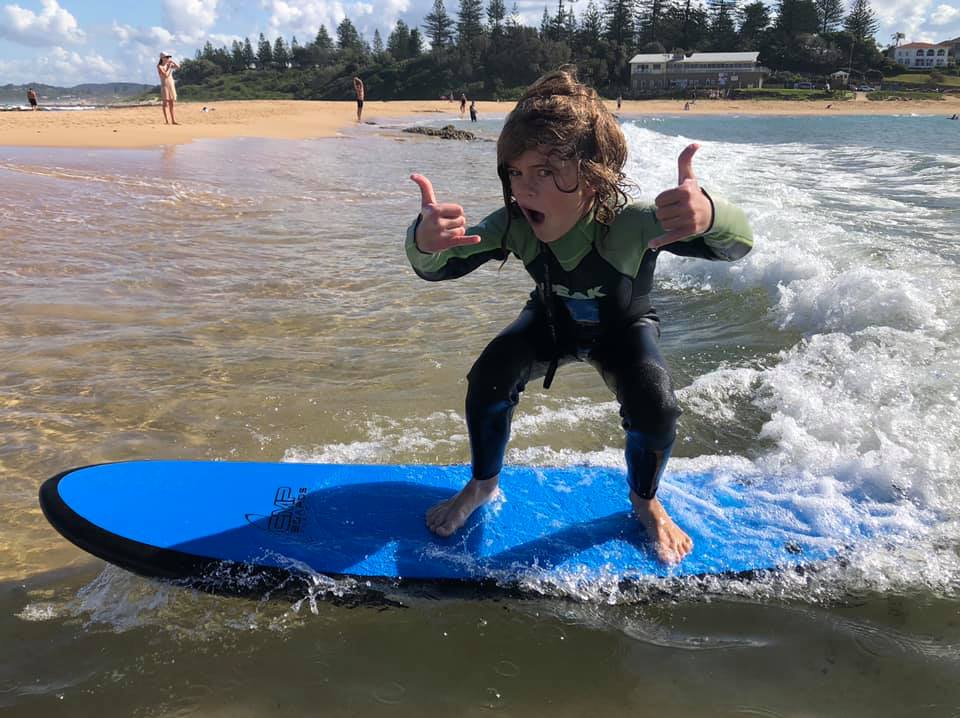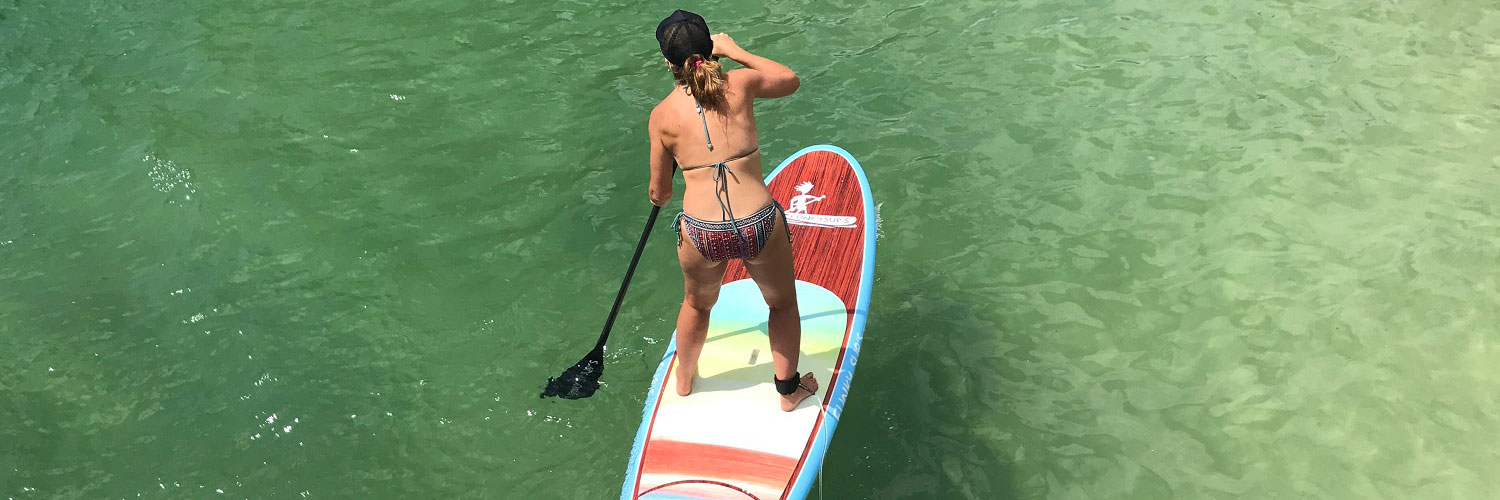
Our Top Ten Tips for Learning to Surf
Learning to Surf
Here are 10 tips for those wanting to learn to surf. Let’s just say these are tips to help you get started, but like any new sport it takes practice. So let’s help you get surfing those waves!
Get someone to Teach You
It is a good idea to grab a friend who surfs or take some surfing lessons at your local beach. Usually you will start off by being pushed onto the waves so having someone to help and teach you the basics will help you achieve results faster.
Selecting the Right Beginner Surfboard
It is so important when selecting a beginner surfboard that you select a wide, thick and stable surfboard when learning. In simple terms flotation demands volume and a beginner surfboard should have loads of buoyancy so that when catching a wave the mistakes are tolerated. The bigger the board the faster you will learn as they are more stable and buoyant. So let’s explain why surf schools use soft top surfboards for teaching a surfer the skills of catching waves. They are wide, thick and stable and are also known as a foam surfboard. Well it’s all about building confidence and a little time spent on a bigger volume surfboard in the beginning will help in learning the skills faster.
Select the right wave and Beach to Start At
With learning to surf it is all about getting as many waves as possible and it is important to start in the white water to build confidence. It is so important that you surf a beginners wave and learning on a good steady wave. In general find a wave that looks crumbly and slow. Also a small wave on a sandy beach is the best spot as you usually can stand and build confidence.
Practice Paddling
Paddling is something you will do a lot of when surfing. A common problem when learning to surf is a poor paddling technique.
The basic technique is to keep your fingers relaxed and spread apart and use deep strokes in the water, as close as possible to your surfboard. A paddling stroke should be like a swimming stroke. Getting a good rhythm as you paddle and be relaxed.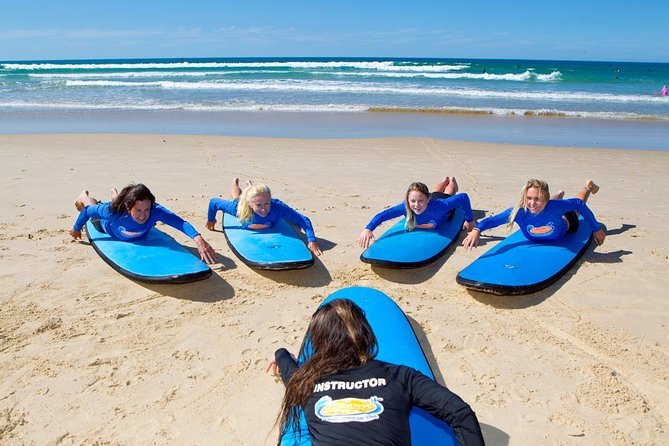
Standing Position on the Board
Let’s begin by deciding whether you are goofy or natural foot which means which foot you put at the front of the surfboard. So you are goofy footed if your right foot is at the front and natural if you left foot is at the front. Don’t worry too much here as most people work it out as they practice to stand up on a surfboard. This info just helps when someone asks you if you are goofy or natural.
Bend your Knees
A vital technique is that when you are on a wave you bend your knees and have your arms out to balance you as you stand. Make sure you don’t bend your back as you will lose your balance.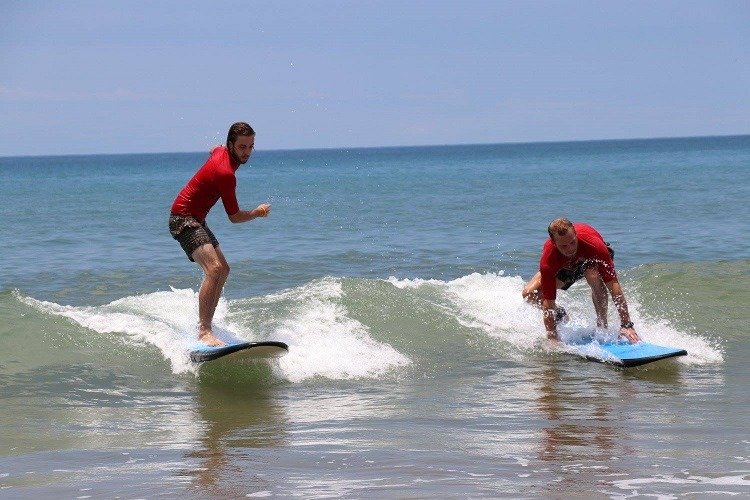
Learn to Duck Dive
When a breaking wave is ahead you need to decide to race to paddle over the wave or duck under it (this is for those you are not catching), you will need to stay perpendicular to the whitewater. The Whitewater is the part of the wave that is breaking. What happens when you don’t is that the wave will grab you and your board and pull you under towards shore.
Get Used to a “Wipe Out”
If there is something you will need to get used to in surfing it is that you will fall, fall again and fall once more. The power of the wave will knock you down and it is all in the game of surfing.
Motivation and Persistence
It is all about practice and the more you go out the better you will be.
Once you are hooked there is no looking back.
Have Fun
The most important thing! If you are not having fun when learning to surf, then something is wrong.
Watch our great video with a CMP Board in action.
If you are wanting to learn to surf, visit our range of beginner surfboards that will get you enjoying the waves in no time.
Tags: Softboards, Surfboards
